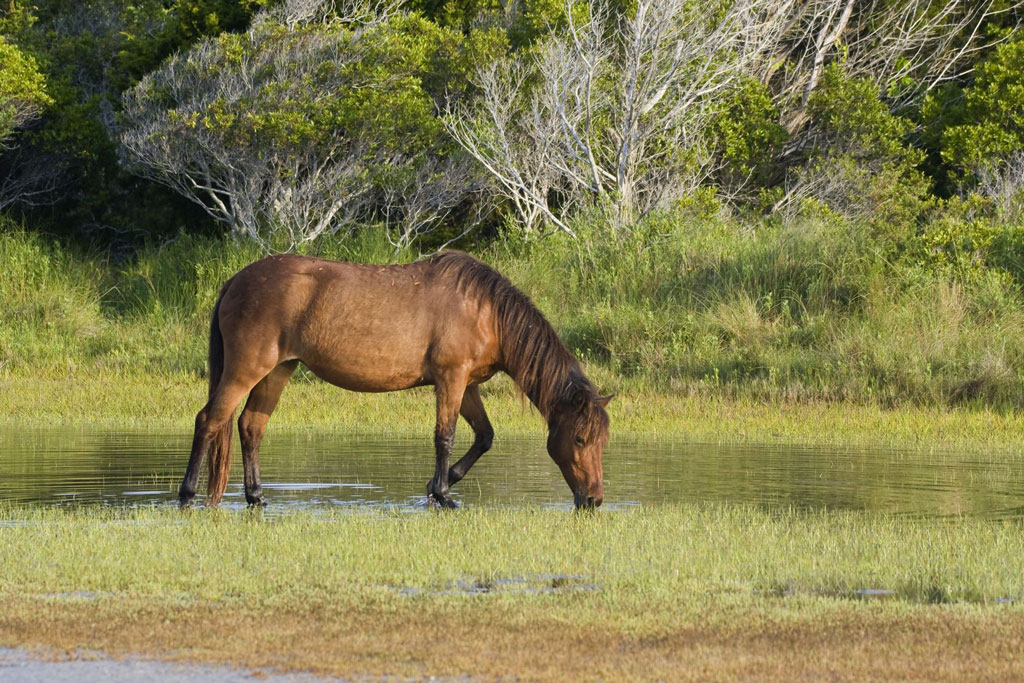
A wild horse feeds on marsh grasses in North Carolina’s Outer Banks. Photo © Bob Decker/123rf.
Spring debuts in the southeast as early as late February, then creeps into central North Carolina and up the coast, reaching the mountains a little later. Temperatures are a pretty consistent 60-70 degrees by mid-April. The weather’s nice, but some regional events are so large that entire cities or corners of the state may be booked. April is the most challenging month, with Wilmington’s Azalea Festival, Durham’s Full Frame Documentary Festival and North Wilkesboro’s MerleFest. Weather can change on a whim. It pays to layer, as temperatures in the 80s can drop into the 60s at night.Summer is the high season: beaches are jam-packed, traffic is slow in the mountains, and across the state you’ll find festivals and events. Heat and humidity can be brutal, and the cooler mountains and coast draw the most visitors for this reason.Autumn begins in the mountains and spreads across the state. Fall foliage accounts for the mountains’ second high season, running from late September through early November; it’s busiest in October, when cooler weather offers relief after sweltering September. Near the coast, fall doesn’t begin until after hurricane season has passed, in early November. Water along the coast stays swimmably warm past Halloween most years.
Winter is milder here than in many parts of the country, but many businesses in the mountains and along the coast reduce their hours or close entirely. West of I-95, the Piedmont gets a few snow showers, and the coast gets one or two every couple of years. In the mountains, temperatures are much colder and snow falls a few times a year. You’ll hear no complaints from skiers. If you plan to visit the beach or the deep mountains in January, book accommodations in advance.
Weather can change on a whim. It pays to layer, as temperatures in the 80s can drop into the 60s at night. Pack for chilly weather in the mountains, even in the summer. On the coast, it can be breezy and cool on the water even on warm days.
Cell phone signals are pretty consistent, but there are rural pockets on the extreme coast or in the deep mountains where cell service and 3G, 4G, and LET connectivity is spotty.
Excerpted from the Fifth Edition of Moon North Carolina.